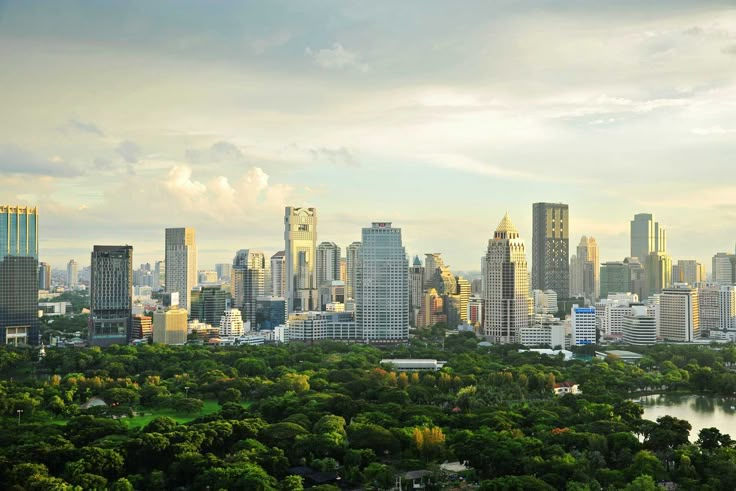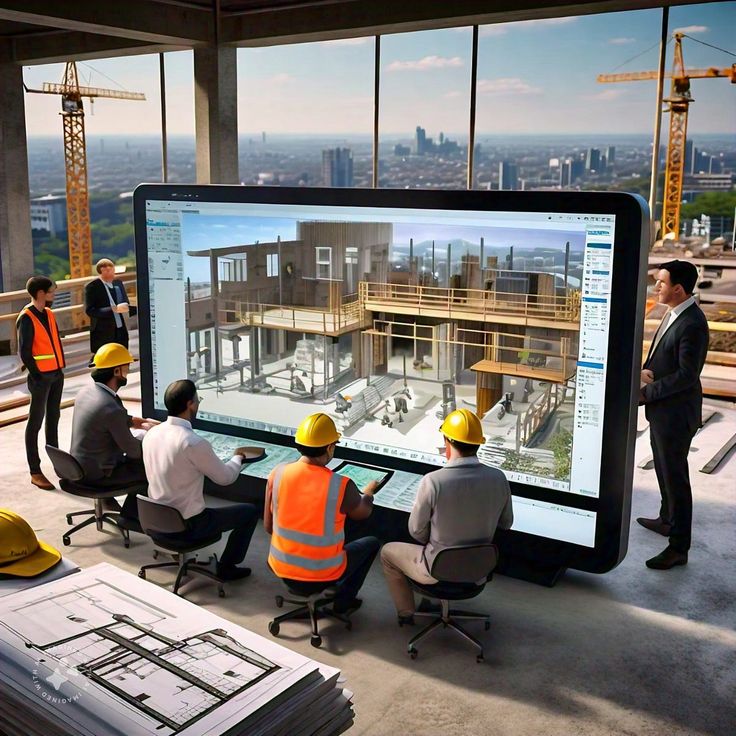With urban centers changing all around the U.S., ecologically responsible landscape architecture is not simply an attractive feature anymore – it has become a requirement. These new-age green initiatives address major issues such as climate change adaptation, water management, and the creation of healthy local communities, thereby revolutionizing our relationship with nature in the cities.
By the year 2025, going green in the design has ceased to be a trend – it is the underlying principle of landscape architecture. We can see how these pioneering, green, and environmentally friendly undertakings have a tremendous impact on both the urban and natural landscapes of America.
The Evolving Role of Landscape Architecture
The U.S. has been a major influencer in the world of landscape architecture for a very long time. In fact, the shift of social, environmental, and technological themes through time had been very evident in each of these landmark projects – from Frederick Law Olmsted’s Central Park to the futuristic The High Line and Brooklyn Bridge Park.
Presently, the profession of landscape architecture, which is confronted by the issues of climate change and densification of cities, has decided to put at the centre of their design not only sustainability and inclusiveness but also the use of technology.
As per the information provided by the U.S. Bureau of Labor Statistics (May 2024), the median annual salary of landscape architects is $79,660, which is quite a significant amount and mainly reflects the role of this profession in the development of urban resilience and sustainable design.
Top 10 Iconic Landscape Architecture Projects in the USA
Such landmark projects are a shining example of how intelligent design can effectively integrate ecology, art, and the human experience. They have each, not only physically, but also metaphorically, changed the cityscape of their respective cities.

1. The High Line – New York City, NY
The High Line used to be a rusting elevated railway that went out of Manhattan, but it now looks like a green strip that runs above Manhattan. With the help of James Corner Field Operations, it combines art, architecture, and nature to become one of the most famous linear parks globally.
Significance: The project was a global demonstration of how urban reuse could revitalize the areas that had been put aside and neglected.
2. Millennium Park – Chicago, IL
Primarily known for the “Cloud Gate” (The Bean), Millennium Park is however not only a place for the tourists — it is a green architecture accomplishment that deals with the heat, water, and energy in a very eco-friendly way.
Importance: It is a signal that city parks can combine technology with art and still be green.
3. Gas Works Park – Seattle, WA
Richard Haag’s park, which was constructed on the site of an old gasification plant, is a classic example of how the polluted industrial area can be transformed into a vibrant public green space.
The point: The project was pioneering in its commitment to environmental restoration, way before the term “green design” was invented.
4. Brooklyn Bridge Park – Brooklyn, NY
This waterfront park converted old, unused piers into a lively, sustainable area that takes in floodwater and provides a habitat for native species.
Reason to be concerned: The place shows real-life climate adaptation by design.
5. Discovery Green – Houston, TX
What used to be a parking lot is now a 12-acre green space enriched with native trees, gardens, and stormwater features.
Why it matters: It’s an example of urban change – a change of the hard surface to a community one.
6. The Getty Center Gardens – Los Angeles, CA
Reason it matters: The Donald Judd Outdoor Sculpture Garden is an example of how art, nature, and human senses can be combined to demonstrate that sustainability is capable of yielding attractive results.
7. The 606 – Chicago, IL
It is an elevated 2.7-mile trail that was constructed on a disused rail line and now serves as a connection between the neighborhoods via art, nature, and mobility.
Reason: This is the main way in which the project has had a significant impact – it has been the model for how urban greenways can be harnessed to improve community health and create social bonds.
8. ASLA Green Roof – Washington, D.C.
This is the rooftop garden that is the main focus of the transformative initiative by the American Society of Landscape Architects – a project that contributes to heat reduction, air purification, and stormwater management.
Reason it is important: The green tops movement it spurred in cities all over the world was the main effect of it.
9. Peavey Plaza – Minneapolis, MN
Peavey Plaza is a typical modernist urban square that was given a new life for the present day — the design features accessibility, sustainability, and climate resilience.
Purpose: This is a demonstration of a timeless design morphing into the future while still keeping its essence.
10. Black Rock City – Nevada (Burning Man)
A metropolis that is constructed in the desert annually with radical creativity and sustainability — and then it vanishes without leaving any trace.
Why we should care: It serves as the most extreme instance of ephemeral, zero-impact urbanism.
How These Projects Shape the Future
Each one of these lands speaks of a time past, present, and future, change and the deepening bond between humans and nature.
These have been major factors in changes ranging from urban areas handling heat and stormwater more efficiently, to houses being built with green roofs, native gardens, and environmentally-friendly materials.
Basically, eco-friendly landscape architecture has moved beyond the mere beautification of the space – it is concerned with the creation of mechanisms that enable urban areas to sustain life
2025 Trends in Landscape Architecture
What technologies and methodologies will be driving the landscape design of tomorrow are worth taking a look at.
1. Decarbonization Through Design
In an effort to reduce emissions from their projects, architects are utilizing emissions calculator tools like Pathfinder and Carbon Conscious, most especially focusing on using the least carbon-intensive materials and increasing the green cover to naturally absorb carbon.
2. AI + Predictive Planning
Artificial Intelligence technology that was only used for Architecture is now extended to Landscape designers to help them visualize environmental consequences such as water flow, heat impact, and plant growth far before any construction is done.
3. BIM and Digital Twin Integration
Using Building Information Modeling (BIM) and digital twins to not only manage but also monitor in real-time urban parks and green infrastructures from watering to different species recording is what landscape architects are doing.
At the same time, BIM makes the interaction between architects, and structural engineers smoother and results in less wastage of resources and less pollution of the environment.
4. Community-Led and Indigenous Design
We are living in a world where the very essence of designing with the community has been brought to the forefront of all considerations instead of simply designing for them.
Indigenous land management knowledge such as the use of fire for cleaning and planting according to seasons is helping to form a new environmentally friendly way of taking care of the earth.
5. Biodiversity as a Design Goal
Many urban centers are setting concrete targets for biodiversity aiming at a successful implementation of such goals through the use of native plants, pollinator corridors, and micro-habitats that are turning urban areas into real ecosystems.
6. Reclaiming Grey Spaces
Reason it matters: The Donald Judd Outdoor Sculpture Garden is an example of how art, nature, and human senses can be combined to demonstrate that sustainability is capable of yielding attractive results.
7. Automation in Landscape Maintenance
To keep the green spaces in cities in good condition, energy-efficient measures are being implemented through the use of electric mowers, smart irrigation systems, and AI sensors.
8. Education and Leadership
The country-wide landscape architecture institutions have been revamping their programs to incorporate data-driven design, sustainable resource management, and AI instruments components — therefore, they are equipping the upcoming generation to face the digital and climate-conscious era.
Looking Forward: A Living Future
The next generation of landscape architecture in the USA is vibrant, flexible, and digitally-driven.
Wonderful designs of 2025 will not merely be attractive — they will also lower the temperature in cities, purify the air, rehabilitate the environment, and reconnect humans with nature.
All works, whether large or small, are essentially the chapters of a bigger narrative — the one where design is a potent agent of the Earth’s recovery.
FAQs
Q1.What features of a landscape design are environmentally friendly?
The features are: the use of native plants, water conservation, increasing the biodiversity, and reduction of the waste.
Q2. In which way is technology affecting the landscape design in 2025?
Artificial intelligence, Building Information Modeling, and digital twins are tools that facilitate the monitoring and the management of environmental performance in a more efficient way.
Q3. What is the major landscape architecture trend in 2025?
The major trend in landscape architecture is the use of data, ecology, and design to forge landscapes that are
Final Thoughts
Green landscape architecture is not just a fashionable concept, it is a definite obligation.
These are the projects that tell the story of the power of collaboration between design and purpose: the High Line’s plantings above Manhattan and Houston’s recycled Discovery Green.
In 2025 and later, the work of landscape architects will be the main driver of change resulting in eco-friendly, intelligent, and urban areas that put people first.



